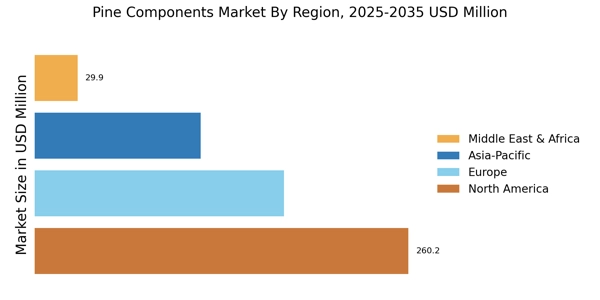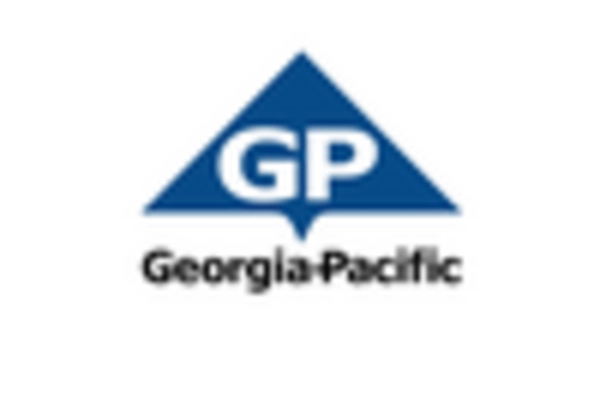E-commerce Expansion
The expansion of e-commerce is significantly impacting the Pine Components Market. With the rise of online shopping, consumers are increasingly seeking convenient access to a variety of pine products. This trend is prompting manufacturers and retailers to enhance their online presence and streamline distribution channels. Recent statistics indicate that e-commerce sales in the home improvement sector have grown by 25% over the past year. As a result, companies that effectively leverage e-commerce platforms are likely to capture a larger share of the Pine Components Market. This shift not only broadens market reach but also enhances customer engagement through personalized shopping experiences.
Technological Innovations
Technological innovations are reshaping the Pine Components Market, driving efficiency and product quality. Advanced manufacturing techniques, such as automated cutting and precision milling, are enabling producers to optimize resource use and reduce waste. Furthermore, the integration of digital technologies, including artificial intelligence and machine learning, is enhancing supply chain management and customer engagement. Data indicates that companies investing in technology are experiencing productivity increases of up to 20%. As these innovations continue to evolve, they are expected to play a crucial role in meeting the rising demand for high-quality pine components, thereby influencing market dynamics.
Sustainability Initiatives
The Pine Components Market is increasingly influenced by sustainability initiatives. As consumers become more environmentally conscious, there is a growing demand for sustainably sourced pine products. This shift is prompting manufacturers to adopt eco-friendly practices, such as responsible forestry and reduced carbon footprints. According to recent data, the market for sustainable wood products is projected to grow at a compound annual growth rate of 6.5% over the next five years. This trend not only enhances brand reputation but also aligns with regulatory pressures aimed at promoting sustainable practices. Consequently, companies that prioritize sustainability in their operations are likely to gain a competitive edge in the Pine Components Market.
Rising Construction Activities
The Pine Components Market is experiencing a surge in demand due to rising construction activities. As urbanization accelerates, there is an increasing need for building materials, particularly in residential and commercial sectors. Data suggests that the construction industry is projected to grow by 4.2% annually, which directly impacts the demand for pine components used in framing, flooring, and cabinetry. This growth is further fueled by government initiatives aimed at infrastructure development, which are likely to sustain the momentum in the Pine Components Market. Consequently, manufacturers are adapting their production strategies to meet the evolving needs of the construction sector.
Consumer Preferences for Aesthetics
Consumer preferences for aesthetics are shaping the Pine Components Market, as buyers increasingly seek visually appealing products. The natural beauty of pine, characterized by its unique grain patterns and warm tones, is becoming a preferred choice for interior design. This trend is particularly evident in the furniture and cabinetry sectors, where aesthetic appeal plays a crucial role in purchasing decisions. Market analysis indicates that products emphasizing design and craftsmanship are witnessing higher demand, with a projected growth rate of 5% in the premium segment. As manufacturers respond to these preferences, the Pine Components Market is likely to see a diversification of product offerings that cater to aesthetic sensibilities.


















Leave a Comment